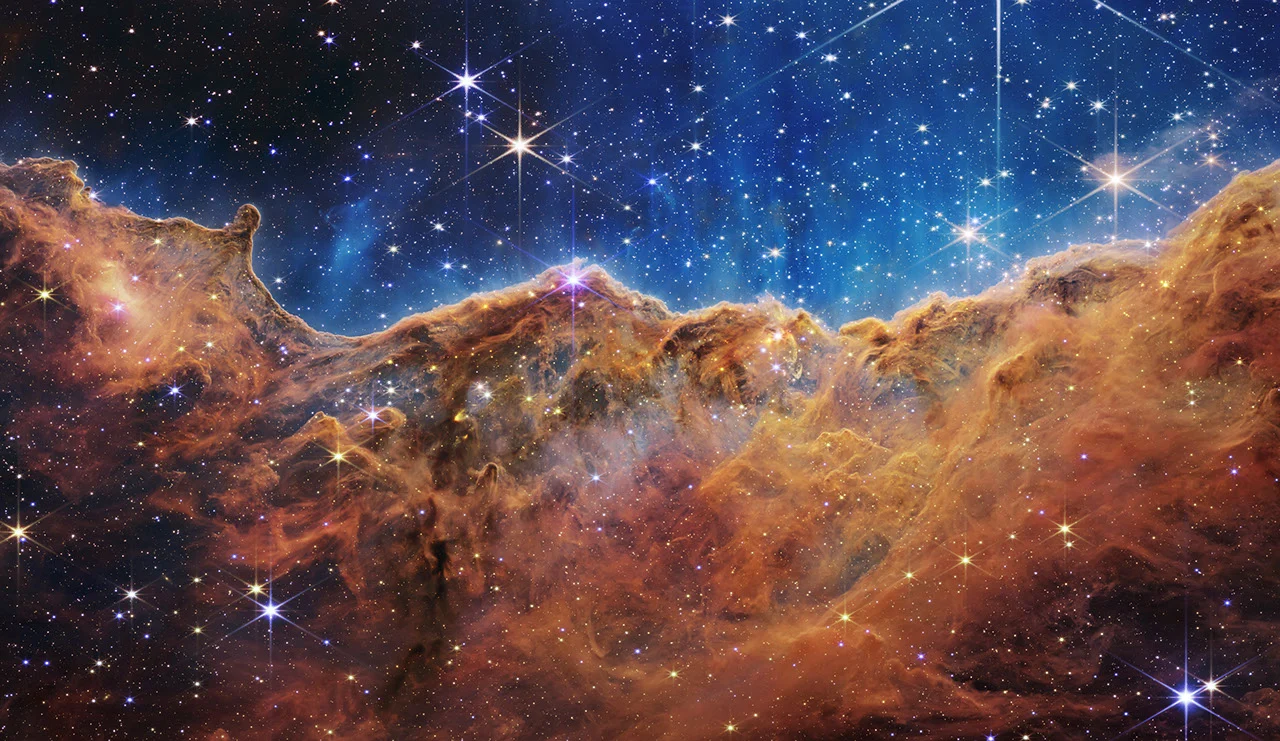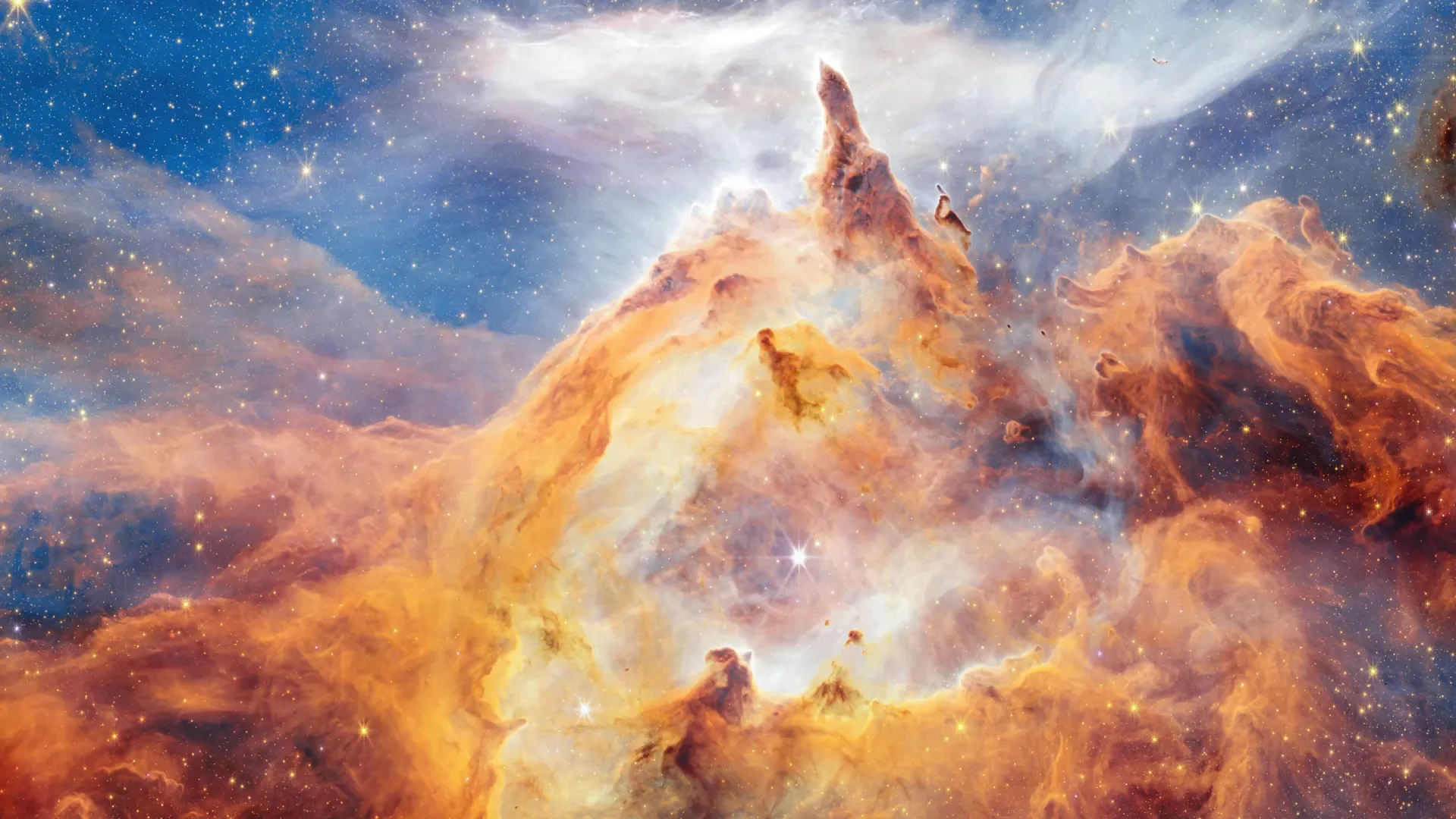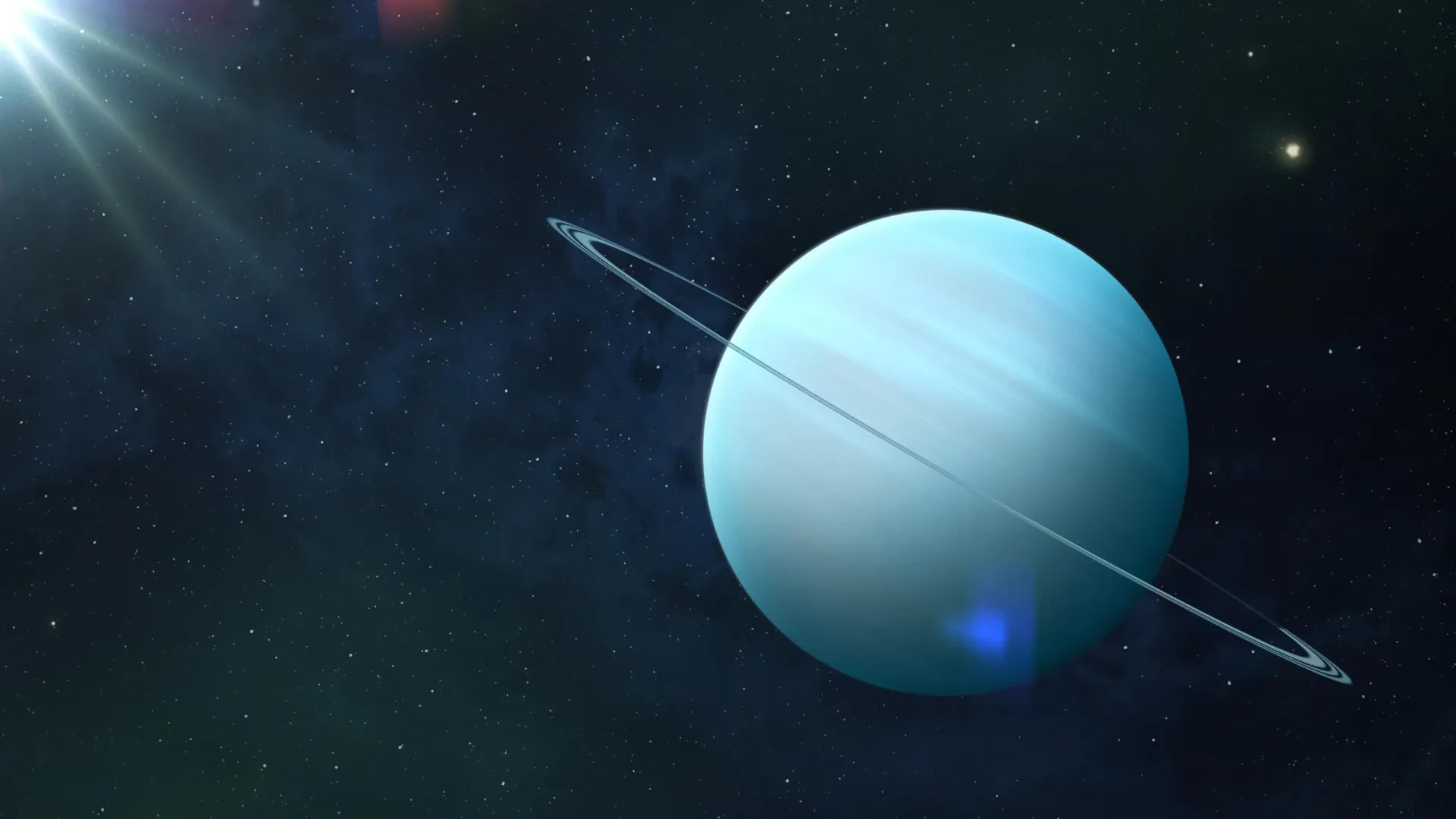NASA's James Webb Space Telescope has captured a stunning new image of the Lobster Nebula, unveiling thousands of previously unseen newborn stars within the cluster Pismis 24 and offering new insights into massive star formation.

October 6, 2025

Source:
NASA Science
Cosmic Cliffs in the Lobster Nebula
NASA's James Webb Space Telescope has delivered a spectacular new view of a vibrant star-forming region known as the Lobster Nebula. The image, released on September 4, 2025, showcases the star cluster Pismis 24 in unprecedented detail.
What appears to be a starlit, mountainous landscape is, in reality, a vast wall of cosmic gas and dust being shaped by the intense energy of newborn stars.
A Celestial Vista
The image reveals a breathtaking cosmic scene reminiscent of a mountain range at twilight.
The top portion is a deep blue and black expanse, densely packed with stars of varying sizes and colors.
The bottom third features craggy, spire-like structures of orange and brown dust, resembling cosmic peaks and valleys.
A delicate, wispy layer of gas stretches across the scene, appearing like clouds gathering over the mountaintops.
This dramatic scape is sculpted by the fierce radiation and stellar winds emanating from the massive infant stars within the cluster.
Keep up with the story. Subscribe to the PR+ free daily newsletter

Source:
NASA Science
Pismis 24: A Stellar Nursery
Located 5,500 light-years from Earth in the constellation Scorpius, Pismis 24 is one of the closest regions of massive star birth, giving scientists a vital look into stellar evolution.
Location and Composition
The Webb telescope’s Near-Infrared Camera (NIRCam) pierced through the dense dust to uncover thousands of stars. The largest and brightest stars in the image are the most massive members of the cluster, while countless smaller stars appear as points of white, yellow, and red light.
The color of each star is determined by its type and the amount of dust obscuring it.
The Crown Jewel: Pismis 24-1
At the heart of the cluster lies Pismis 24-1, once thought to be the single most massive star known. However, research has revealed it to be a binary system containing at least two stars.
These two components are among the most massive stars ever observed, with masses of 74 and 66 times that of our sun, respectively. Their immense luminosity and energy output dominate the core of the nebula.
Read More

Source:
ScienceDaily
Share this news:




















